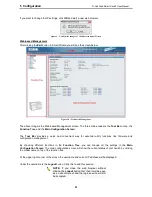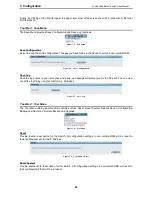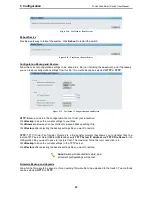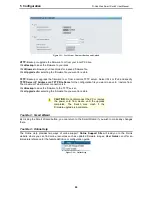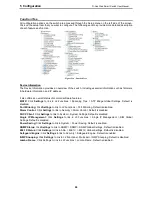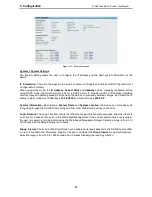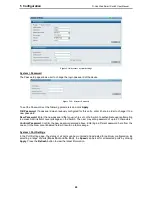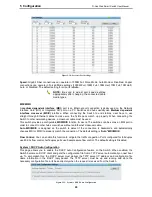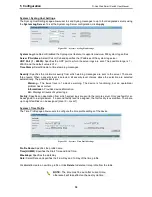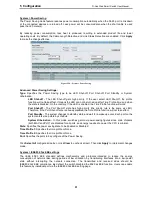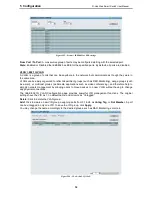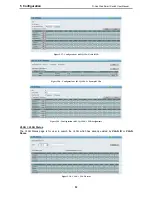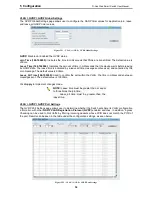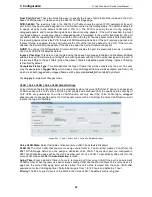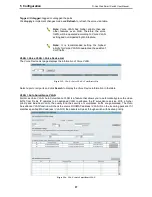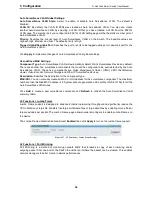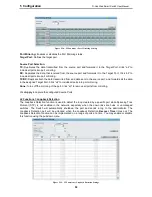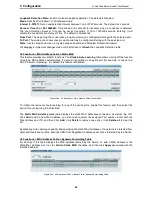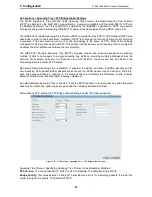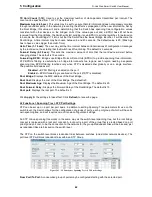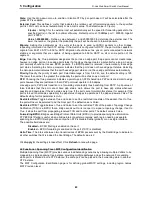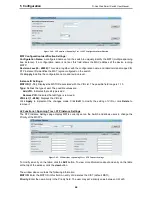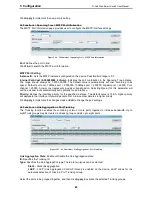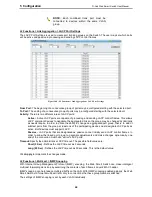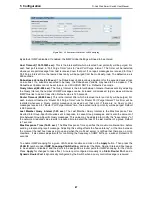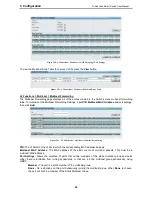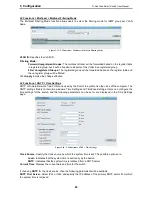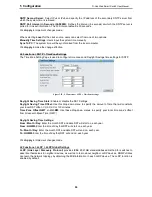
5 Configuration
D-Link Web Smart Switch User Manual
3
3
5
5
From Port/To Port: These two fields allow user to specify the range of ports that will be included in the Port-
based VLAN that user is creating using the 802.1Q Port Settings page.
PVID(1-4094): The read-only field in the 802.1Q Port Table shows the current PVID assignment for each
port, which may be manually assigned to a VLAN when created in the Settings table. The Switch's default is
to assign all ports to the default VLAN with a VID of 1. The PVID is used by the port to tag outgoing,
untagged packets, and to make filtering decisions about incoming packets. If the port is specified to accept
only tagged frames - as tagging, and an untagged packet is forwarded to the port for transmission, the port
will add an 802.1Q tag using the PVID to write the VID in the tag. When the packet arrives at its destination,
the receiving device will use the PVID to make VLAN forwarding decisions. If the port receives a packet, and
Ingress filtering is enabled, the port will compare the VID of the incoming packet to its PVID. If the two are
unequal, the port will drop the packet. If the two are equal, the port will receive the packet.
GVRP: The Group VLAN Registration Protocol (GVRP) enables the port to dynamically become a member
of a VLAN. GVRP is Disabled by default.
Ingress Checking: This field can be toggled using the space bar between Enabled and Disabled. Enabled
enables the port to compare the VID tag of an incoming packet with the PVID number assigned to the port. If
the two are different, the port filters (drops) the packet. Disabled disables ingress filtering. Ingress Checking
is Disabled by default.
Acceptable Frame Type: This field denotes the type of frame that will be accepted by the port. The user
may choose between Tagged Only, which means only VLAN tagged frames will be accepted, and Admit_All,
which mean both tagged and untagged frames will be accepted. Admit_All is enabled by default.
Click Apply to implement changes made.
VLAN > Voice VLAN > Voice VLAN Global Settings
Voice VLAN is a feature that allows you to automatically place the voice traffic from IP phone to an assigned
VLAN to enhance the VoIP service. With a higher priority and individual VLAN, the quality and the security of
VoIP traffic are guaranteed. The Voice VLAN function will only insert the Voice VLAN tag to untagged
packets under corresponding ports. If a VoIP packet comes with a VLAN tag, the Voice VLAN function won’t
replace the original VLAN tag.
Figure 5.33 – VLAN > Voice VLAN > Voice VLAN Global Settings
Voice VLAN State: Select to Enable or Disable Voice VLAN. The default is Disabled.
VLAN ID: The ID of VLAN that you want to assign voice traffic to. You must first create a VLAN from the
802.1Q VLAN page before you can assign a dedicated Voice VLAN. The member port you configured in
802.1Q VLAN setting page will be the static member port of voice VLAN. To dynamically add ports into the
voice VLAN, please enable the Auto Detection function
Aging Time: Enter a period of time in hours to remove a port from voice VLAN if the port is an automatic
VLAN member. When the last voice device stops sending traffic and the MAC address of this voice device is
aged out, the voice VLAN aging timer will be started. The port will be removed from the voice VLAN after
expiration of voice VLAN aging timer. Selectable range is from 1 to 120 hours and default is 1 hour.
Priority: The 802.1p priority levels of the traffic in the Voice VLAN. The default priority is highest.

